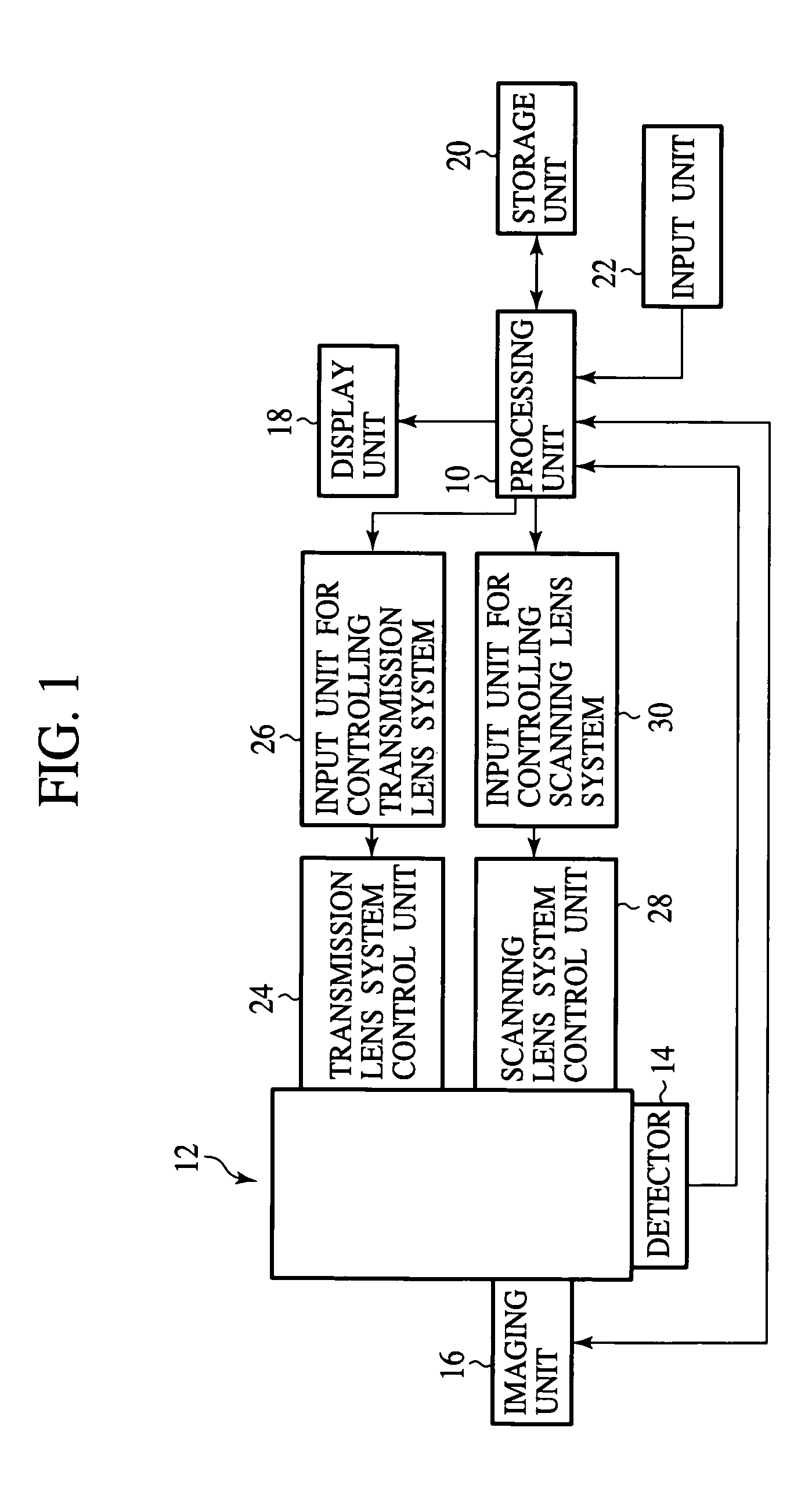Lattice strain measuring system and method
a strain measuring system and strain technology, applied in the direction of material analysis using wave/particle radiation, instruments, nuclear engineering, etc., can solve the problems of coarse spatial resolution power, inability to evaluate micronized electronic devices, and methods whose spatial resolution power is coarse, etc., to achieve high resolution power, short period of time, and high accuracy
- Summary
- Abstract
- Description
- Claims
- Application Information
AI Technical Summary
Benefits of technology
Problems solved by technology
Method used
Image
Examples
first embodiment
A First Embodiment
[0049]The lattice strain measuring system and method according to a first embodiment of the present invention will be explained with reference to FIGS. 1 to 6. FIG. 1 is a block diagram of the lattice strain measuring system according to the present embodiment. FIG. 2 is a view of a part of the lattice strain measuring system according to the present embodiment.
[0050](The Lattice Strain Measuring System)
[0051]The lattice strain measuring system according to the present embodiment will be explained with reference to FIGS. 1 and 2.
[0052]As shown in FIG. 1, the lattice strain measuring system according to the present embodiment comprises a processing unit 10 which generally controls the measuring system and performs prescribed processing, an STEM (Scanning Electron Transmission Microscope) 12, a detector 14 which is disposed below the part where a sample is to be mounted and detects magnitudes of electron beams transmitted by the sample, imaging unit 16 which takes pi...
second embodiment
A Second Embodiment
[0110]The lattice strain measuring system and method according to a second embodiment of the present invention will be explained with reference to FIGS. 1, 2, 7 and 8. The same member of the present embodiment as those of the lattice strain measuring system and method according to the first embodiment shown in FIGS. 1 to 6 are represented by the same reference numbers not to repeat or to simplify their explanation.
[0111]The lattice strain measuring system and method according to the present embodiment are characterized mainly in that relative lattice strain distributions are displayed.
[0112](The Lattice Strain Measuring System)
[0113]First, the lattice strain measuring system according to the present embodiment will be explained with reference to FIGS. 1 and 2.
[0114]In the present embodiment, a processing unit 10 computes respective finite differences between a lattice strain magnitude at a reference point and lattice strain magnitudes at respective measuring point...
third embodiment
A Third Embodiment
[0128]The stress measuring system and method according to a third embodiment of the present invention will be explained with reference to FIGS. 1, 2, 9 and 10. The same member of the present embodiment as those of the lattice strain measuring system and method according to the first or the second embodiment shown in FIG. 1 to 8 are represented by the same reference numbers not to repeat or to simplify their explanation.
[0129]The stress measuring system and method according to the present embodiment is characterized mainly in that stresses generated at respective measuring points are computed, based on lattice strain magnitudes given by the above-described method, and the image of a distribution of the computed stresses is displayed.
[0130](The Stress Measuring System)
[0131]First, the stress measuring system according to the present embodiment will be explained with reference to FIGS. 1 and 2.
[0132]A processing unit 10 computes stresses generated at respective measur...
PUM
| Property | Measurement | Unit |
|---|---|---|
| lattice strain distribution | aaaaa | aaaaa |
| lattice strain | aaaaa | aaaaa |
| scanning transmission electron microscope | aaaaa | aaaaa |
Abstract
Description
Claims
Application Information
 Login to View More
Login to View More - R&D
- Intellectual Property
- Life Sciences
- Materials
- Tech Scout
- Unparalleled Data Quality
- Higher Quality Content
- 60% Fewer Hallucinations
Browse by: Latest US Patents, China's latest patents, Technical Efficacy Thesaurus, Application Domain, Technology Topic, Popular Technical Reports.
© 2025 PatSnap. All rights reserved.Legal|Privacy policy|Modern Slavery Act Transparency Statement|Sitemap|About US| Contact US: help@patsnap.com



